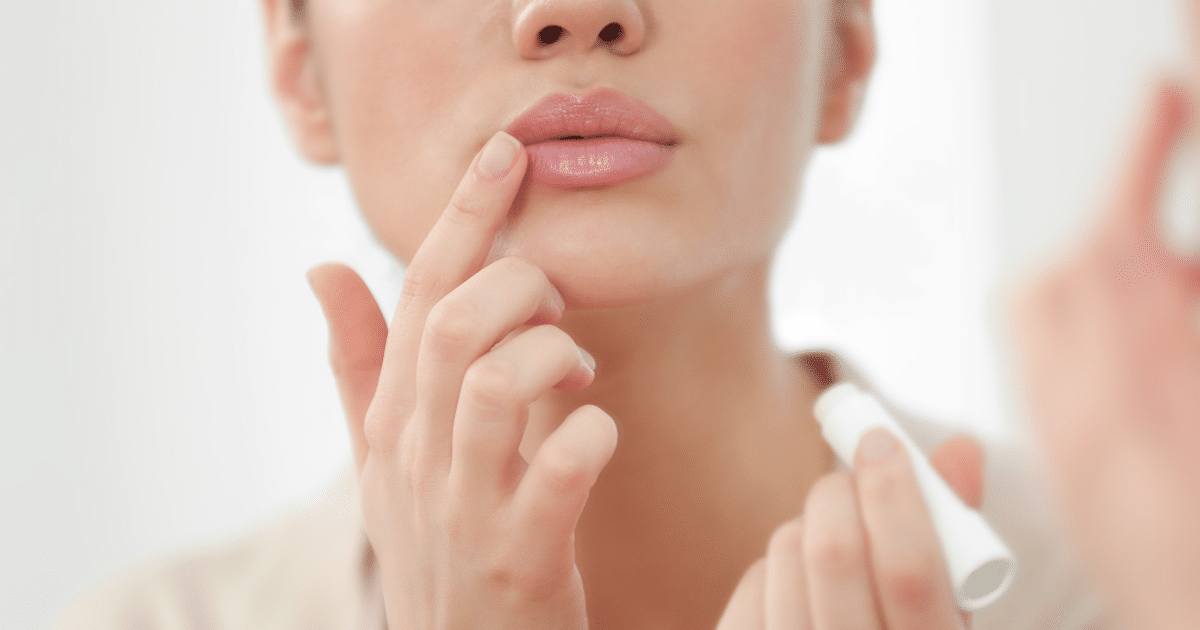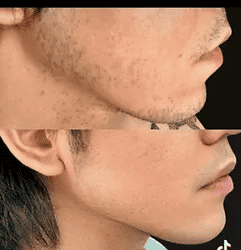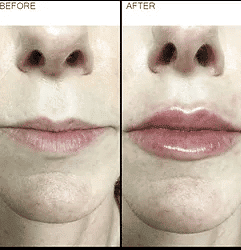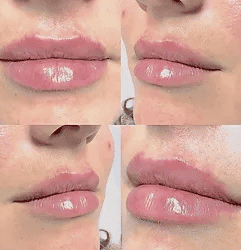
Start Fresh! When and Why You Should Use Dissolve Fillers
Many people love the way they look after getting lip, under-eye, or cheek fillers. However, not all patients experience the results they want from these treatments. In some cases, fillers might cause treated areas to look lumpy or uneven. After receiving a botched filler treatment, it’s natural to wonder, “Does filler dissolve?”. The answer to this question depends on the type of filler you have.
It’s important to note that most issues with filler injections only occur when patients go to inexperienced injectors. Problems can also happen if you receive additional injections on top of old fillers. To fix these types of outcomes or prevent them from happening in the first place, here’s when and why you should dissolve fillers.
Schedule a FREE consultation
Schedule a FREE consultation
Understanding the Most Common Types of Fillers
Fillers are injectable substances that help restore fullness and shape to the face. They offer a convenient alternative to invasive plastic surgery procedures. Fillers are not permanent. This makes them a viable solution for people nervous about undergoing permanent cosmetic procedures.
There are different types of fillers out there. The most common types include hyaluronic acid, hydroxylapatite, and poly-L-lactic acid. The hyaluronic acid type is the most popular. You can find it in brands like Juvéderm, Restylane, and others. The filler Radiesse contains calcium hydroxylapatite, and Sculptra is made from poly-L-lactic acid.
The type of filler you choose to have injected in your lips, cheeks, or under-eyes is very personal. However, you should know that some of these fillers are easier to dissolve than others. If you think you may ever want to dissolve your filler in the future, it’s best to go with the hyaluronic acid type. You can dissolve hyaluronic acid fillers with an enzyme called hyaluronidase.
Why You Might Want to Dissolve Fillers
No one gets a dermal filler with the expectation of dissolving it soon afterward. However, there are times when you may want to get yours dissolved. Here are some possible scenarios that may result in the need for filler reversal.
Lumps and Bumps
Ideally, the fillers you receive will have a plumping and smoothing effect. But in some cases, providers can overfill certain areas and cause them to look lumpy or develop bumps. The lips and eye troughs are the most common areas affected by post-filler lumps and bumps. Filling these areas requires great skill and a steady hand. If you develop lumps in treated areas, you may dissolve those fillers and start over.
Product Migration
Fillers can sometimes migrate to undesirable areas of the face. This can occur even after injection by a skilled provider. Each patient’s anatomy plays a huge role in where the filler ultimately settles. It is impossible to predict whether filler will migrate because everyone’s anatomy is so unique. For example, some patients have more laxity in their tissues, which gives the filler more freedom to move around. Facial fillers are also very soft during the first 48 hours after injection. Therefore, they can migrate to different areas more easily.
Unwanted filler migration can result in an unnatural appearance. You may be able to prevent migration by applying ice to the treated area to keep swelling at a minimum. But what if your filler moves to unwanted areas despite your best efforts? In that case, we can use hyaluronidase to dissolve fillers and start over.
Emergency Reversal
Another possible trigger for lip filler reversal is if the filler causes serious complications. For example, if your provider accidentally injects filler into a blood vessel, you should seek immediate reversal. Filler in a blood vessel will block oxygen and blood from getting to the tissues. If the issue isn’t resolved right away, the affected tissues could die.
How Hyaluronidase Dissolves Fillers
Hyaluronidase is a medication that breaks down hyaluronic acid-based fillers. Your provider can inject hyaluronidase into the desired treatment area to break down dermal filler. The effects of this filler dissolver are surprisingly fast. As soon as hyaluronidase contacts the filler, it begins to soften and break it down immediately. Approximately 48 hours post-injection, you should notice a markedly reduced appearance to the filled areas.
For the best results, you may need to get multiple hyaluronidase injections to dissolve fillers. In some cases, the first injection may be sufficient to break up superficial lumps. However, you may need multiple sessions to dissolve larger nodules or uneven areas in the lips or other areas of the face.
Dissolving Filler Before and After Pictures*
The idea of getting hyaluronidase injections for lip dissolving may seem scary. However, many patients undergo this procedure with excellent results. View our photo gallery to see dissolving filler before and after treatment results. Keep in mind that we cannot guarantee specific results for every patient. Injecting fillers is not a perfect science, and neither is dissolving unwanted fillers. Therefore, individual results may vary.*
Getting Filler Redone After Dissolving It
After you dissolve fillers to deal with overfilling, lumps, or other issues, you may decide to reinject fillers. This isn’t a problem at all. Many people have their fillers dissolved to “reset” the treatment area and start fresh. We’ll generally have you wait a couple of weeks to allow any swelling or bruising from dissolver injections to subside.
We also recommend waiting at least two weeks so you can see how the treated area looks once the previous fillers are totally dissolved. That way you’ll have a better idea of how much filler you want re-injected to get the results you want.
Learn More About Filler From the Experts in Reno & Las Vegas
If you’re interested in learning more about fillers, the good and the bad, and why you need to dissolve them, contact the experts at our Las Vegas or Reno medspa locations. We are proud to be the leading provider of dermal fillers in Las Vegas, Reno, and the surrounding areas. We help our clients achieve optimal filler results to avoid the need for dissolving them.
However, if you are someone who has received botched filler or has received filler from someone who was not as knowledgeable, resulting in unacceptable results, we can help! We believe our clients should never have to live with the unwanted effects of lip or facial fillers gone wrong.
If you want to dissolve fillers and have them redone, contact us now. We can also dissolve lip filler if you decide you don’t like the way it looks. Call us at 702-218-1083 for our Las Vegas location or 775-983-5630 to schedule your Reno lip filler appointment.
Dissolving Fillers FAQs
Does It Hurt to Dissolve Fillers?
Dissolving fillers can be uncomfortable. However, it generally isn’t more painful than getting the fillers in the first place. It is difficult to predict whether your experience will be painful since pain tolerance is subjective. Your provider may be able to help ease your discomfort if it becomes too intense during your lip dissolving procedure.
What Are the Side Effects of Dissolving Filler?
The side effects of dissolving fillers are similar to those of filler injections. They may include localized swelling, bruising, and temporary discomfort. In rare cases, allergic reactions can occur. In the case of an allergic reaction, seek immediate medical attention.
How Much Does It Cost to Dissolve Filler in Reno?
The average cost to dissolve fillers depends on your provider and geographic location. The size and complexity of the treatment area can also impact the final price. Contact the experts at Revenge MD to learn more about our pricing on Reno lip fillers and dissolving fillers.
Will Lip Filler Dissolve on Its Own?
Lip filler will eventually dissolve on its own. However, it can take anywhere between six and 12 months for this process to occur naturally. If you don’t want to wait that long, it may be best to receive a hyaluronidase injection.
Schedule a FREE consultation




